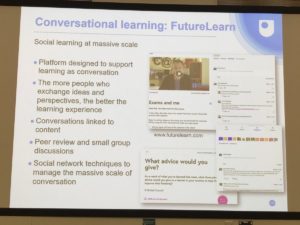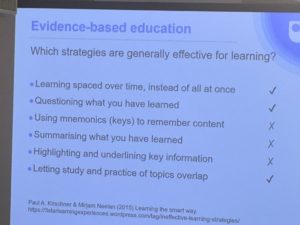Revisiting the Learning Layers experience “2.0” – Reworking the research papers of 2017
Last April (2017) I prepared for myself a ToDo list to prepare three conference papers with which I would revisit the experience of our EU-funded Learning Layers project (2012 – 2016) with emphasis on the achievements of the Construction pilot. I had the plan to participate in three conferences and I expected that I could prepare respectively three research papers that would examine from a conceptual point three important aspects of our project work
- the methodological issues on accompanying research (comparing our work with that of predecessors);
- the pedagogic foundations of our work (relating our starting points to current developments at policy level and in parallel pilots);
- the relevance of our work vis-à-vis industrial and organisational innovations (comparing our innovation agenda with its prior and emerging innovation concepts).
In October 2017 I wrote a blog in which I mentioned that intervening factors had slowed down my work. However, I was pleased to inform that I had managed to complete my ToDo list and produce three working papers to cover the themes that I had planned. Yet, after a short while I had to admit it to myself that I had celebrated my achievements too early. Indeed, I had covered the themes but the quality of the papers was uneven. In all papers I could see gaps that I had to cover. I had brought into picture essential elements of each ‘story’ but not all of the stories were woven together with a coherent argumentation. So, I understood that I have to rework all the papers from this perspective. Now I have revisited the Learning Layers experience once again and completed the necessary reworking of these papers.
What do the (reworked) papers tell about our research in Learning Layers and on the growth of knowledge via our project?
Below I try to present the main contents of the newly reworked papers and highlight to red thread of the ‘story’ that is to followed through different sections. Here I want to draw attention on the conceptual and methodological foundations of our work in the Learning Layers as well as to the reflection on the predecessor concepts in the light of our work. Moreover, I will discuss some newer developments in innovation policies and innovation research as challenges for our approach.
Paper 1: Accompanying research between knowledge development and support for innovations in the field – Revisiting earlier innovation programmes as predecessors of the Learning Layers project
The first paper starts with the explanation, why the research team from our institute ITB declared itself as an accompanying research (Begleitforschung) team in the Learning Layers’ Construction pilot. As a conceptual and methodological background for this approach the paper reconstructs the development of accompanying research in two parallel threads of innovation programmes in Germany:
- Innovation programmes for social shaping of work, technology and organisations (Humanisierung der Arbeit, Arbeit und Technik);
- Pilot projects and innovation programmes in the field of vocational education and training (Modellversuche, BLK-Programm “Neue Lernkonzepte in der dualen Berufsausbildung”).
Throughout these explorations the paper draws attention to different positions, whether the researchers should take a co-shaping role in innovation processes – and on shifts of emphasis in the course of time. Finally, the paper draws attention to specific positions that argue for more intensive and shaping-oriented involvement in terms of ‘action research’, smart innovation analyses and/or dialogical knowledge development. In the concluding reflections the paper compares the position of ITB researchers with the latter approaches.
Paper 2: Research as mediator between vocational learning, work process knowledge and conceptual innovation – on the role of research in the modernisation of vocational education and training (VET)
The second paper starts with recapitulating how the ITB researchers entered a participative co-design process with an open agenda and then supported the design idea – digitisation of training and learning processes in VET – with conceptual inputs. In the following sections the paper presents different conceptual reflections and insights into policy debates – to be followed by exemplary pilot projects that respond to the challenges raised in the debates. The relations between these sections can be characterised as follows:
- The contribution of Rauner (shaping-oriented VET) provides an interim synthesis of different concepts and themes that are essential for VET development. The empirical studies of Böhle (experiential knowledge) and Koch (mastery of complete work process) highlight the importance of their key concepts for advanced automation and future-oriented staff development.
- The contribution of Baethge et al. presents a negative scenario on renewability of VET and vocational learning culture during the transition to ‘knowledge society’. The contribution of Pfeiffer presents a critique of Baethge’s interpretation on ‘experiential knowledge’ and gives insights in complementary relations between academic and experiential knowledge in innovative organisations. The contribution of Spöttl deepens the analysis with his examination on to parallel educational genotypes (Bildungstypen) and on the relevance of hybrid types for the emerging innovation agenda ‘Industry 4.0’.
- In the light of the above-mentioned conceptual inputs and the debates on the sustainability of VET the selected pilot projects (and the example of Learning Layers) demonstrate, how shaping-oriented VET can be based on participative processes of practitioners. The exemplary cases demonstrated, how pilot projects have mobilised the participants in creating their own innovation agendas and implementation plans – and shaping the digital tools and web resources they need for themselves. Even, if these may have been modest starts, they have provided a basis for peer learning and peer tutoring – as social dynamics for innovation transfer.
Paper 3: Accompanying research as bridge-builder between digitisation and social shaping in workplace learning – Linking ‘work process knowledge’ and ‘smart innovations’ to ‘Industry 4.0’
The third paper examines the innovation agenda of the Learning Layers’ Construction pilot vis-à-vis industrial and organisational innovation research that takes into account the role of VET. In this context the following milestones and transitions are discussed:
- The starting point is the re-examination of the legacy of the European Work Process Knowledge network of the late 1990s. The paper gives a brief overview on the studies, the debates and the conclusions on the importance of VET.
- The next milestone is the re-examination of the German project “Smarte Innovation” that was completed in 2012. This project developed a more intensively participative approach to analyses of product life cycles and innovation potentials at different stations. The project also presented critical analyses of communication gaps, lack of understanding on innovation potentials in ‘remote’ stations and on the dysfunctional role of externally imposed process standards. Concerning the role of VET, the project drew attention to an emerging model for continuing vocational training (CVT) that outlined a new career progression model.
- The following milestone is the analysis of successive innovation programmes and the shift of emphasis from ‘remedial interventions’ (that compensate the negative consequences of mainstream innovations) to ‘enabling innovations’ (that seek to facilitate the development of ‘learning organisations’ into innovation leaders). As a contrast to the above-mentioned ones, the emerging innovation agenda ‘Industry 4.0’ shifts the emphasis to advanced automation, complex networking and new digitised production and service chains.
- The final milestone is the examination of the current discussion of social and educational scientists on the role of human actors in the context of ‘Industry 4.0’. Here, a number of researchers have brought together different conceptual and empirical studies that emphasise the potential of skilled workers and on the possibility to shape learning opportunities when developing new production or service concepts. Parallel to this, some researchers explore the possibilities to develop off-the-job learning opportunities as means to enhance workplace learning alongside the new production concepts.
– – –
I think this is enough of the contents papers and of the ‘stories’ that weave them together. As I see it, the Learning Layers’ Construction pilot may not have been at the forefront of industrial and organisational innovations or in the introduction of digital agendas to the field of VET. Yet, it has been clearly part of the big picture on all accounts and it has done its part to stimulate essential innovations in the field of VET. However, this leads us to another question: What can we say about transfer of innovations in the light of the Learning Layers project and its follow-up activities? To me, this is a subject to further studies to be reported later.
More blogs to come …
 don’t have the money to pay for fees and travel (let alone beer) in attending these events. I am not sure that I actually miss the conferences themselves, but I do miss meeting friends and catching up with what is going on.
don’t have the money to pay for fees and travel (let alone beer) in attending these events. I am not sure that I actually miss the conferences themselves, but I do miss meeting friends and catching up with what is going on.
 This is a new paper, written by Graham Attwell and Ana Garcia about the new apprenticeship system in Spain. The research was sponsored by the International Network on Innovative Apprenticeship (INAP) and the paper will be presented at the “Crossing Boundaries in VET: Social Dimension and Participation” conference in rostaock in August. We will provide a downlaodable version of the paper once we have overcome our fight with Word templates.
This is a new paper, written by Graham Attwell and Ana Garcia about the new apprenticeship system in Spain. The research was sponsored by the International Network on Innovative Apprenticeship (INAP) and the paper will be presented at the “Crossing Boundaries in VET: Social Dimension and Participation” conference in rostaock in August. We will provide a downlaodable version of the paper once we have overcome our fight with Word templates.
